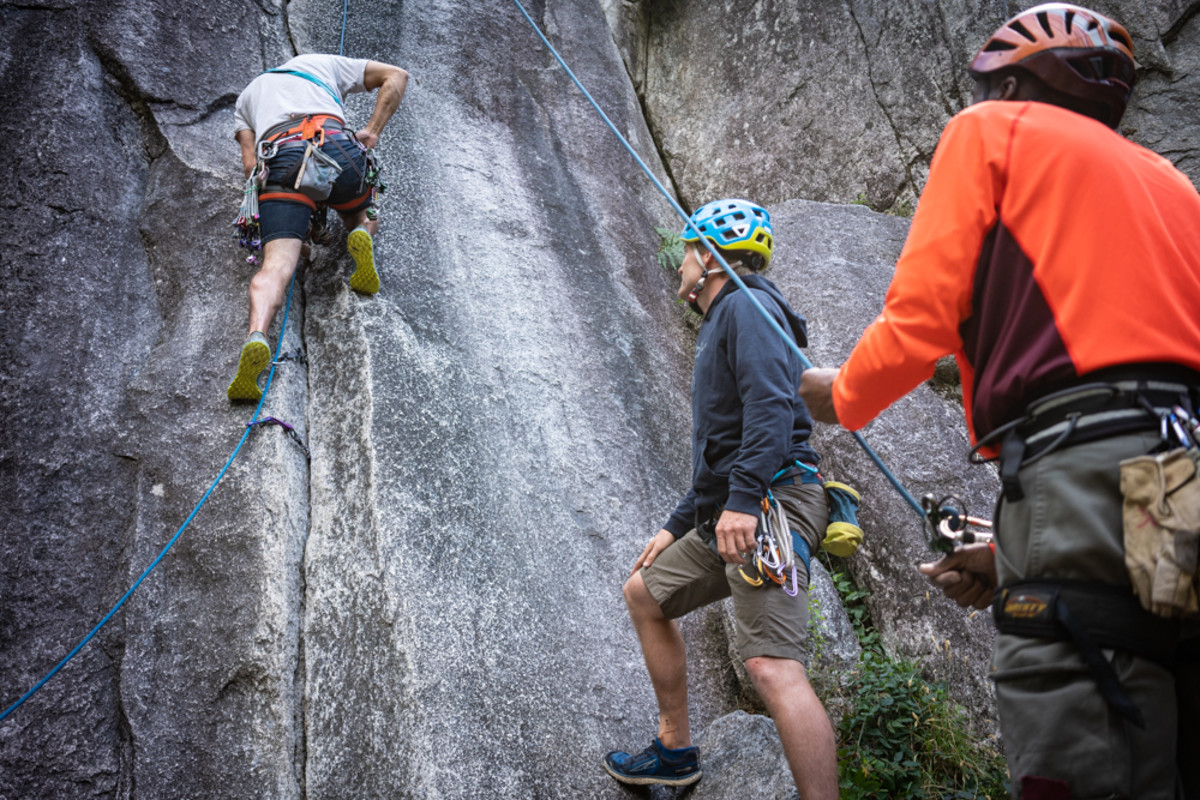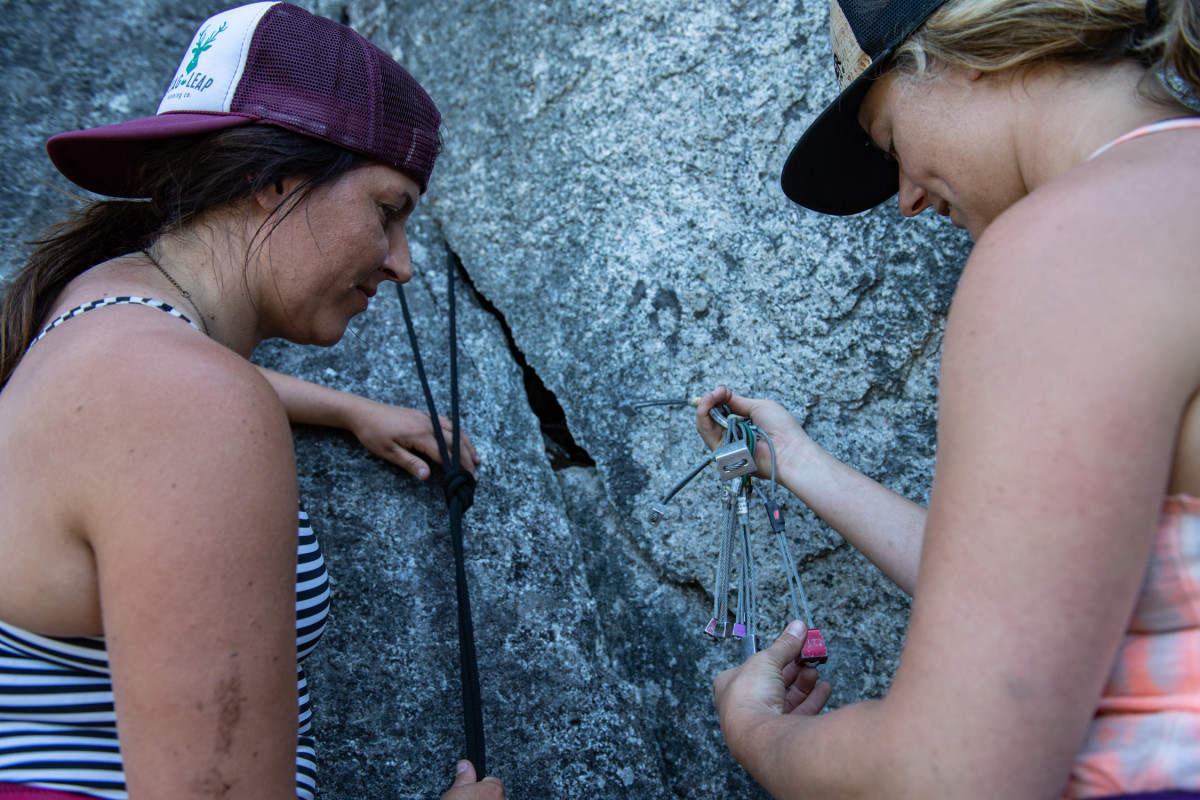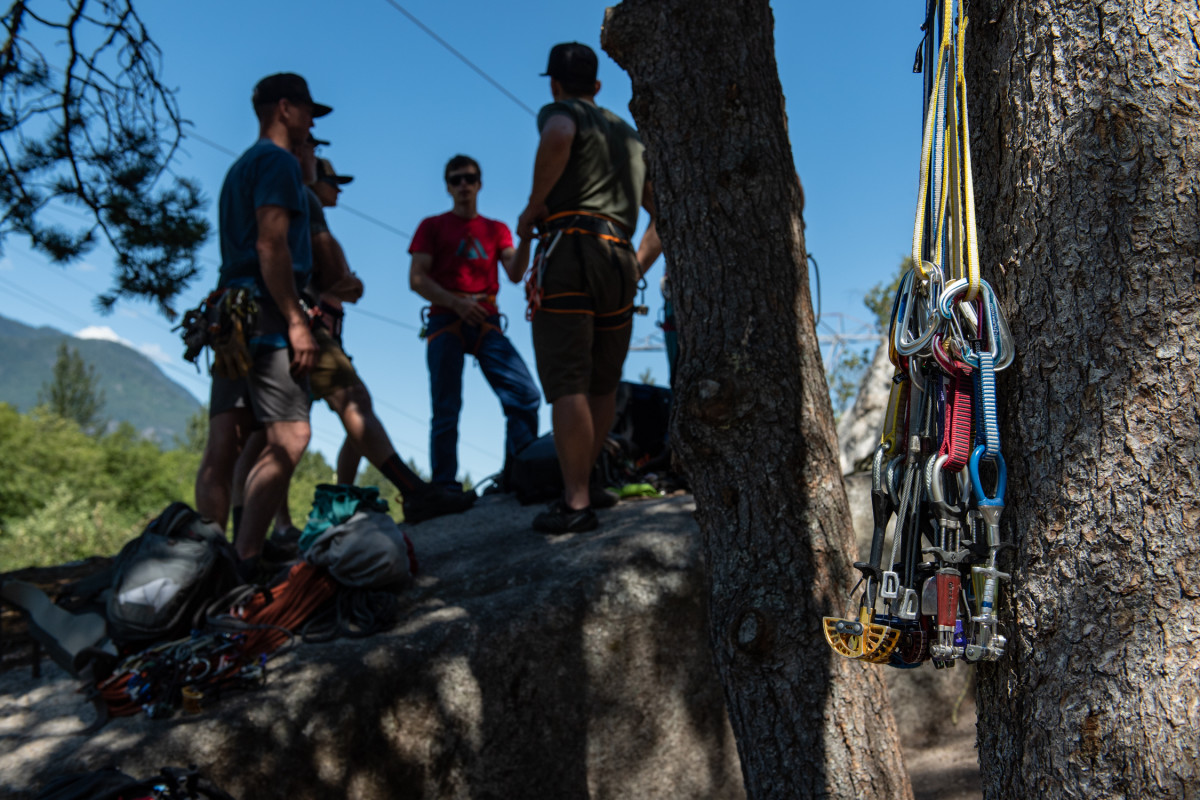The term “Traditional” rock climbing (or as many often refer to as “Trad”), wasn’t really used until the ’80s when there needed to be distinction between trad and sport climbing (e.g. bolting of rock routes). Up until then, everything was what we call now call “Trad” climbing.
Trad, which is the practice of placing “gear” in rock features, cracks or other nooks for protection, and then removing the pieces after the climb is finished, is often seen as a more pure way to climb.
Although sport climbing has grown worldwide and has allowed climbers to attempt climbs that were previously inaccessible, there are still more areas that can be climbed traditionally—and knowing how to climb trad always give climbers more options.
We spoke with a two of the world’s top climbers and guides at the Arc’teryx Climbing Academy to get tips on trad.
Arc’teryx athlete and International Federation of Mountain Guides Associations (IFMGA) guide Mark Smiley started his climbing career in the gym at a young age, but now spends much of his time using his trad skills when he guides, especially for bigger objectives. Arc’teryx athlete and professional climber Vikki Weldon is a multiple Canadian Youth National Champion who started as a sport climber. By the time she was 15, she was already climbing 5.13s, but she only started to climb trad when she moved to Squamish. She had to start over, though, now she can lead grade 5.13 on trad.

Why is it important for climbers to know trad and why is crack climbing an important skill?
VW: Traditional climbing can take you to some incredible places, up in the alpine, up new routes. I don’t think that it is necessary for all climbers to become trad climbers, but if you’re keen on adventure and getting up high, being able to place gear and climb cracks is essential.
MS: Crack climbing technique is another tool to get you to cool places. The first time you look at El Capitan, and you think, “I need to climb that!” Well, there aren’t any sport routes up it. Crack climbing opens the doors to so many cool adventures and remote places. So, when you are ready to leave the dog barking, speaker bumping, shoulder-to-shoulder belaying, that the sport crag can be, crack climbing is the answer to take you places.

What are some tips for those just starting out trad climbing?
VW: Start easy. If you’re a 5.10 sport climber, that doesn’t mean that it translates to 5.10 trad. They are very different. Give yourself the opportunity to have a good time, and take the grade level down a few notches. It is not a race, and the more time you spend learning how to place gear, the more you will enjoy it.
I think it is good to go with someone who is keen to teach, or hire a guide for a day, or even sign up for a clinic such as these offered at the Arc’teryx Climbing Academy. Trad can seem overwhelming, especially if you come from a different style of climbing, such as sport or bouldering. Learning the different sizes of cams, their colors and what order to rack them in, is a great start. Following a pitch and analyzing how your partner placed gear can be really helpful.
MS: Grabbing the wrong piece of gear is super frustrating and can be dangerous, especially when you’re trying to place it, hanging from one arm. I think it’s best to literally feel the crack, and associate that size feeling with the appropriate cam. For example, I know that if I stick my hand in and the crack is a tight hand jam, that that relates to a Black Diamond #1 red cam. If it is a snug finger lock then that’s a Black Diamond #0.4 grey cam. This makes it much easier then simply looking at a crack and knowing the size. Which is ultimately the next step in learning, but it takes time to develop your eye.
Also, fail quickly! If you grab the wrong size cam, which happens all the time, don’t waste your energy trying to make it work. Simply fail quickly, grab the right size and place it well. Your future self will be thankful when you climb above a solid piece versus a piece that you “made work.”

What is some of your favorite trad gear?
VW: I learned on Black Diamond Camalots and they are still my favorite cams. I also recently started climbing in La Sportiva TC Pros climbing shoes. I have pretty weak ankles and I found they have made a huge different in supporting my ankles when I’m torquing them inside a crack.
MS: Black Diamond cams are, in most peoples’ opinions, the industry standard. They work great, get stuck less than “single-axle” cams. Most importantly, once you learn the sizes and corresponding colors, you will be able to use your friends’ cams and you won’t have to relearn a different brand’s sizes and colors.
CAMP nano 22 wiregate carabiners are the best wiregate on the market. They are super light, the gate action is perfect, and you can get a ton of them on your harness gear loops without feeling crowded, plus they come in colors to help you organize your gear.
People with huge hands, go with the bigger Photon wiregate, but for everyone else, the Nano 22 is the jam. Having a really lightweight wind jacket that can be worn on your harness (stuffed in its own pocket) is really nice. The Arc’teryx Squamish Hoody is the boss. It’s really light, and super durable, will cut the wind and even shed a light rain. It’s the piece I always have with me on a multi-pitch rock route if the weather looks iffy at all.
from Men's Journal https://ift.tt/2VEDL6x
via IFTTT








0 comments:
Post a Comment